Your best teacher is your last mistake.
Ralph Nader
You’d probably agree with me – the more you learn from someone’s experience before launching a startup, the less mistakes of your own you’ll make.
Our SaaS startup team has successfully passed the pre-launch stage and reached the beta test. Just a few months ago we wish we had known these 50 things we are about to share today.
Hopefully, our experience and knowledge gained during our startup journey help you launch your next big thing and make it a success.
Not sure where to start? We’ll guide you through.
I’m starting out with the tips that you’d probably consider pretty basic. However, it’s still important to highlight them as many first-time startupers get carried away with their idea forgetting about the ‘common sense’ things that should go without saying.
SaaS product pre-launch essentials:
1. Start a business with passion
Whatever you do, do it with passion or not at all. Passion will make you more creative, more resourceful, it will get you further faster and guide you and your team through the most difficult times. Become the wildest fan of your app and infect both your team and customers with that love and spirit.
2. Validate business idea early
You don’t want to end up spending thousands of dollars to realize it’s just you and your best friend using the app you’ve built. Reach out to relevant communities on social media, forums, put together a survey and ask as many people as you can. Make sure there are people who not only need your product, but are also ready to pay money for it.
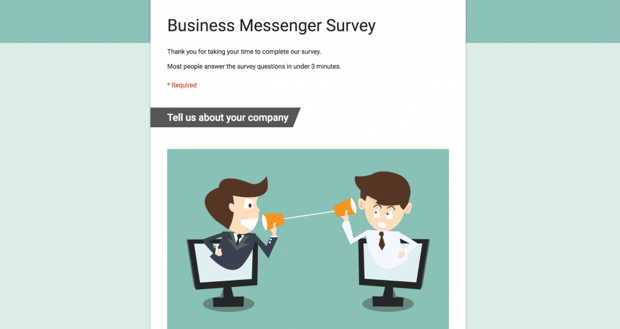 Chanty business idea validation survey
Chanty business idea validation survey
3. Define a competitive edge
You have to provide an extra value compared to your competitors. The earlier you think of this unique proposition, the easier your startup life will be later on. You can’t imagine how many people ask us “How are you different from Slack?” every single day.
4. Don’t compete on the price
While having more attractive numbers at the pricing page is completely natural for a newly arrived startup, please, do make sure it’s not the only difference between you and your rival. Customers are spoiled these days – as soon as the new less expensive competitor comes to the stage, they tend to shift to use this new app in a blink of an eye. Unless, of course there is something else that keeps them attached to your product.
5. Learn about your target market
Getting to know your buyer persona is extremely important while running a business. Never stop learning about your target audience as their needs evolve and so should your product. When you are just starting out, put a survey with several questions to find out the biggest pain point. Apart from doing a survey, make sure you communicate with your potential clients directly. The more you talk to your customers, the better (and faster) market fit you’ll get.
6. Determine the funding sources
While being funded is associated with a rocket growth of your startup, prepare to spend time pitching and re-pitching your business idea at various meetings and conferences. The investor is usually a great mentor that could introduce you to a number of valuable connections. At the same time you and your team will enjoy more freedom if you go bootstrapped.
The kickoff
7. Find your geek
If you are a non-technical startup founder, you ought to find someone who will advise you at the beginning. This person will help you make a smart choice of the server infrastructure, determine the programming languages stack and outline the general product development flow.
When it comes to the engineer joining your team, basically you have three major options:
- Partner up with an expert
- Hire an in-house developer
- Hire a remote/freelance developer, team or an agency
These options have their pros and cons that would take a whole other article to cover. At Chanty, we were lucky to hire an in-house engineer with an experience in building a similar product in the past. We realize that his expert knowledge is an important puzzle piece for our startup success.
8. Give it a name
We wanted a one solid word, not the Team-Communication-That-Will-Blow-Your-Mind vague kind of name. This word was also supposed to have a decent background to it. After experimenting with a few names by running Facebook ads and analyzing the audience reaction, we’ve chosen Chanty. The primary meaning of our brand name is exactly what we needed – a song that sailors used to sing while working together.
9. Get domain and hosting
When your idea is validated, you already know the major pain points of your buyer persona and, what’s more important, people actually need your product, it’s time to deal with the rest. You need to make sure your domain is available and then choose a secure web host. Sometimes this first step is easier said than done! We had to hustle a little to get the beautiful chanty.com domain. (Subscribe to our blog if you are interested in how we did it). However, the now popular .co, .io domains work great for other startups. We also got a hosting plan to support our marketing website. The $20 per month package at DigitalOcean perfectly meets our needs. In terms of picking a suitable domain, you need to be proactive in finding the right one for your startup. To select a domain search names online and check that the one you want is available.
10. Put a coming soon page together
Once you got a domain, put a simple ‘coming soon’ page. Make sure people are able to sign up and leave an email there. The first version of our page looked like this:
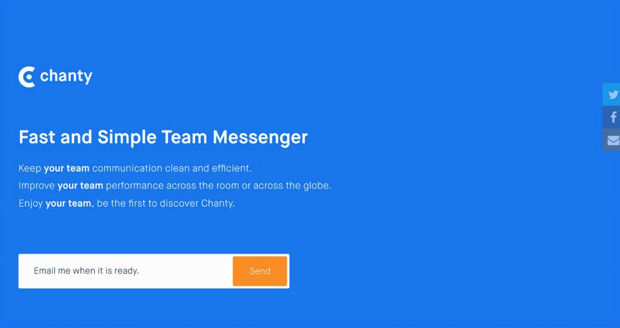 The first version of Chanty landing page
The first version of Chanty landing page
11. Servers for your SaaS
There are a few things to consider while choosing a server to host your product. Will the interactions between users and the system happen real-time? If so, the high-latency and high performance server is required to meet the needs of your app.
The Chanty software operates real time. Moreover, we need several servers to solve the various tasks. That’s why our team took time to conduct a comparative analysis of various hosting providers. So far, Amazon servers have the best balance of price, performance, storage and latency for our needs. Moreover, according to Forbes, more than 40% of SaaS companies have been using Amazon Web Services to deliver their apps. When your app is getting bigger, there’s also an option to easily scale vertically and horizontally with Amazon.
If you want to ensure seamless interaction between users and your app, make the server choice wisely. Our recommendations? If you are far from server infrastructure, use the help of an experienced full-stack engineer.
12. Who’s going to join you?
Since we’ve started talking about engineers here, it’s obvious that building a SaaS product requires a few experienced professionals (the number depends on how complicated the software is). Although startup CEOs are well-known for being the jack of all trades who do everything, hiring a team of experts is inevitable.
Just a few months ago our team included a founder, an engineer, a marketing manager and a designer. Today the marketing team has grown to six people, we had another full-stack developer and also a graphic illustrator to join our Chanty team.
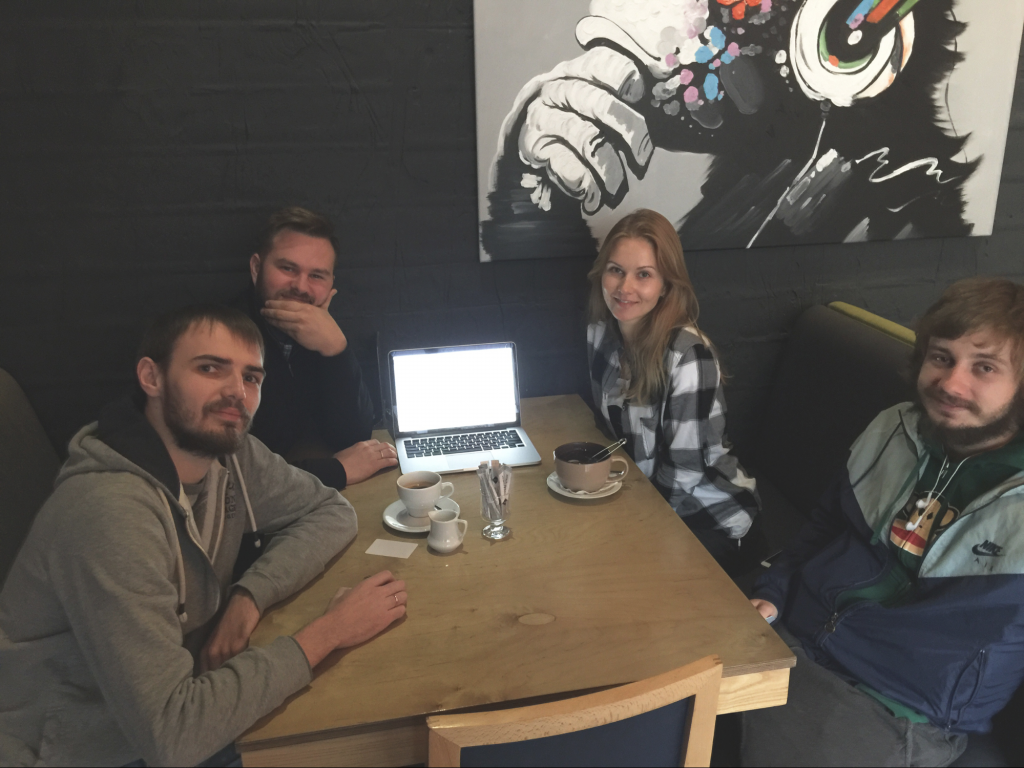 Chanty team having a meeting in a coffee shop
Chanty team having a meeting in a coffee shop
13. Make a room for a future team
Having the first couple of meetings in a coffee shop is OK. Then it’s time to move into an office unless you’ve hired people to work for you remotely. The co-working space could be a rational idea. It’s less hustle and paperwork for you as a founder. If your teammates agree to bring their own laptops to work, it also saves your money tremendously.
Our main office is in New York, but the R&D center is located in Kharkiv, Ukraine. Apart from Chanty, there is an outsourcing company our founder runs, so we were lucky to have a fully-equipped office already.
14. Put together a privacy policy
The second page that we’ve added to our coming soon website was the Privacy Policy. Our team was convinced that this page should be put live just for the sake of formality. However, we were surprised to see how many people have actually visited it. They’ve spent more than two minutes in average reading the page. It turned out visitors are quite eager to find out how we collect and share their data. Therefore, don’t underestimate the privacy policy and employ a good lawyer to write it down for you to avoid issues in the future.
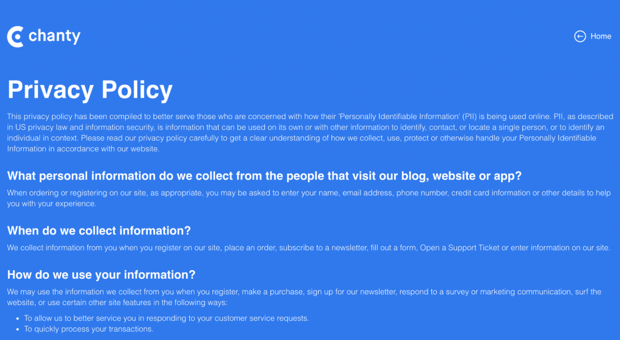 Chanty privacy policy screenshot
Chanty privacy policy screenshot
15. Register your company properly
Running a business means paying taxes, so you’ll have to register your company in order to operate officially. The company registration will be also required when setting up the Apple developer account or receiving a Wildcard SSL for your domain. For SaaS startups, understanding SaaS taxability early is crucial as different jurisdictions may have unique requirements for digital products. Having tried several online registration services, we’ve finally decided on going with a lawyer. Luckily, he made the overall registration process fairly easy. If you want to avoid wasting time while registering your company, I’d highly recommend you to hire an experienced lawyer.
16. Get an official address and a phone number
Even if you run your startup in a remote mode, you should still have an official address and the telephone number to get listed on Google My Business, Yellow pages or company databases like Hoovers, where they call your number to verify the information.
17. Purchase an SSL certificate
SSL or Secure Sockets Layer creates an encrypted link between a web server and a browser. At the same time, your site visitors will see the green secure lock at the address bar as well as the ‘https’ instead of ‘http’ in front of your domain. To protect all the data exchange and look good to Google (they don’t encourage insecure ‘http’ websites anymore) you should employ SSL certificate.
You can get a simple SSL for free (e.g. at Let’s Encrypt). When you need a different level of protection and validation, you should purchase an extended validation (EV) certificate to prove that your company controls your website or Wildcard SSL to secure your site subdomains as well. After some research we were able to do it at GeoTrust certificate authority. Additionally, implementing SSL certificate monitoring helps ensure your certificate stays valid and doesn’t expire unnoticed, maintaining uninterrupted security for your users.
 Https and Secure lock in front of Chanty.com domain
Https and Secure lock in front of Chanty.com domain
18. Work on the logo
Dmytro Okunev, the Chanty founder is also a graphic design expert, so he took the logo development process quite seriously. We have hired three professional freelance logo makers and received almost a hundred of various ideas. Ironically, we’ve ended up with the very first version of Chanty logo – the one Dmytro created himself.
I wouldn’t recommend spending that much time, effort and money to come up with a logo. It’s good to have, it’s a crucial part of branding, but it’s not a deal-breaker. I personally know a woman who runs a successful online business for a few years without any logo.
 Chanty logo ideas
Chanty logo ideas
If you don’t want to deal with expensive logo designers and spend a fortune on it, there’s always an option to create your own logo using an online logo making software such as Wepik’s free online logo maker tool.
19. Get the tool kit ready
There are certain software tools your team will need to operate. For our team at Chanty we’ve chosen the following kit:
- Jira CRM to track our tasks;
- GitLab for coding, testing and deployment collaboration;
- Stripo for email templates creation;
- Confluence for company wiki and meeting notes;
- Google Workplace for a corporate email, storage and documents collaboration;
- MailChimp, Mailgun and Amazon SES to send out emails to our customers;
- Team communication tool. We have tried various Slack alternatives as well as Slack for several weeks. Once we had the first version of our product ready, we’ve switched to our tool, Chanty;
- InVision app for prototyping;
- Google Keyword Planner, Ahrefs, SEMrush, SimilarWeb for keyword, traffic and backlinks research;
- Our graphic designers use Adobe Illustrator and Sketch;
- Google Analytics, Hotjar, Yandex Metrica for site analytics, heatmaps and more;
- Buzzsumo for content research;
- Canva, Hootsuite, TweetDeck, Manageflitter, Hashtagify to manage and design our social media accounts;
- LinkedIn Sales Navigator to outreach potential clients in LinkedIn.
Wow, I didn’t realize there were so many. You’ll probably have the kit of your own, however, this list should at least help you receive an approximate idea of what you’ll need.
20. Focus on building MLP
Don’t wait too long till you introduce the first version of your product to the audience. I know, the UX is far from what you’ve wanted it to be and you also wish it worked faster. But if you don’t launch early, you wouldn’t know what to improve and which direction to move.
When is a right time to show your product to people? There’s a so-called minimum viable product (MVP) or what’s more trendy now – minimum loveable product (MLP). It is a product that receives maximum amount of love from your users with a least effort from you and your team. How do you know if customers love your app? It’s simple, it has to solve at least one issue – a pain point that is important for your buyer persona.
21. Outline the product priorities
Take a look at your competitors’ features. Outline the minimum set of the functionality that is essential for your product to solve the main customer issue. We’ve set up the first three development stages for our product – Priority 1, Priority 2, Priority 3, where Priority 1 includes a set of features to build our MLP. You will most likely change the list of features several times, but you still need a plan to begin with.
22. Make the roadmap and the deadlines clear
Until you’ve made it clear, your teammates have their own image of the product development flow. Keep your communication transparent to boost productivity – make sure your entire team is aware of the dates of private beta, public beta, public launch, etc. It’s OK to postpone the launch if there were some issues along the way, but keep in mind that potential customers your marketing team have been hand-picking all these months won’t wait for you forever.
The marketing website
23. Design a killer landing page
When the product isn’t ready yet, the marketing website is all you have. There will be no other chance to make the first impression so make sure you make a good one by putting all your effort into crystal clear design and UX of your page. There are many landing page builders that can assist you to design a converting landing page that can help you jump-start your product sales.
24. Include CTA
The goal of the landing page is to generate leads. At the pre-launch stage, leads are the early adopters – people willing to test your app out. Therefore, the call-to-action is a must-have for every landing page. Usually it’s followed by a signup form with a field for an email and a submit button.
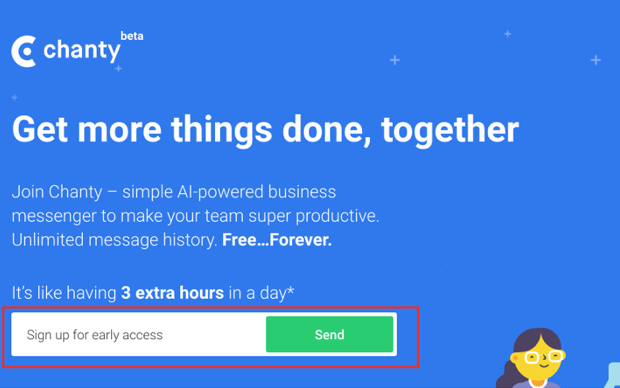 Chanty CTA and signup form
Chanty CTA and signup form
25. Add more pages as you go
Have you ever seen a single-page website ranking well in Google? I haven’t. The more pages you add, the more ‘answers’ your site will have to numerous Google queries. If your marketing strategy involves SEO, additional landing pages are crucial for your success. Moreover, with time you’ll have to add the privacy policy, the knowledge base, the FAQ section, etc.
26. Start a blog
Content marketing is a big thing for us. If you choose to attract organic traffic with your articles, I advise you to:
- Write in-depth articles that bring value. We’ve given a chance to a couple of freelance writers, but it just didn’t work. Their articles don’t reflect the personal experience, the passion for what we are doing, their words are not filled with excitement.
- Don’t expect instant results. Running a blog is a lot of time and effort.
 Chanty organic traffic by Google Analytics
Chanty organic traffic by Google Analytics
Watch your rivals
27. Make a list of competitors
Competitor analysis is where you start once the business idea hits your head. Making a list of your competitors and carefully examining each of them with a SWOT analysis could help you understand your own strengths, weaknesses, opportunities and threats.
28. Set up a Google Alert
Track your competitors online activity and updates by setting up Google Alert. Once they are mentioned online, you’ll get an inbox notification. This way you will be informed on the niche in general, will be able to track the trends, the new platforms writing about your rivals as well as the release of their new product features.
29. Do the backlinks analysis
Forget about ranking in Google top if you don’t have the backlinks. Among hundreds of all other factors, backlinks remain the most important. With the competitor research tool like Ahrefs you can conduct an in-depth backlink analysis of your competitors and figure out your own backlink strategy based on your findings. Make a list of resources you could also outreach in order to publish a press release, submit your startup or write a guest post.
30. Marketing channels analysis
Do your competitors receive traffic from social media, referrals or Google search? What is their marketing strategy? Once you export Instagram analytics or Facebook analytics and get answers to how your social media performs overall, another question arises – should you follow the same path as your rivals or try the other unexplored ways? At Chanty, we are doing both – focusing on SEO and content marketing as they’ve proven to be great traffic (and leads) source for other market players while also experimenting with new channels like Quora or Facebook groups.
31. What keywords do they rank in Google?
Getting back to SEO, you can (and should) analyze what keywords bring the most traffic to your competitors. With the tools like Semrush and Ahrefs you can analyze the keyword difficulty. In other words, this gives you an idea on how hard it is to rank for a particular keyword. This way you can focus SEO efforts on the low hanging fruit to receive the fastest results.
Think Google
32. Setup Google Tag Manager
GTM was designed to simplify everyone’s life, both marketers and developers. Now there is no need to ping a developer every time distracting him from an important task. Once the GTM is added to the website, the marketing expert can add or delete any piece of required code either it’s Facebook pixel, Google remarketing or Hotjar analytics.
33. Set the goals in Google Analytics
Whether you choose to use Google Analytics or any other tool, it’s important to set up the goals and events for you to get the maximum out of your site reports. At a pre-launch stage, it’s a good idea to set up an event tracking for the signup form submission to understand your conversion rate.
34. Do the keyword research
There is a pool of keywords your visitors might use in order to look for a product similar to yours. Find them all along with the monthly frequency with the tools like Google keyword planner (free), SEMrush or Ahrefs (paid). Break them into groups and think of the additional landing pages to add to your website for the sake of SEO. E.g. if you find out people are typing in “POS for hairdressers” make sure to have the point of sale for hairdressers landing page to increase your chances for organic traffic.
35. Outline the list of topics for the blog
Google likes fresh content that is supported with data and brings readers a pot of value. Think of the pain points your potential customers may struggle with. Help them find a remedy for their pain in your articles. E.g. if you are building a time tracker, you have to become a wikipedia for time management. CRMs write about project management. At Chanty blog, we are writing about productivity, communication and collaboration. To learn more about this approach and inbound marketing, feel free to visit Hubspot academy.
36. Consistently produce content
Whatever they say, content is still a king these days. Just don’t produce the mediocre content. When writing on a topic that’s been already covered, analyze your competitors (the top 10 Google search results for a particular keyword) and write waaay better – provide more value, share more insights, support with more facts, do the better images. Don’t limit the content to the text only. Try infographics, videos, slides – find what works best for your niche. With a competition being so tough these days, your content has to be head and shoulders above everyone else.
37. Start earning backlinks
Producing content isn’t enough. It’s important to spend as much time (or more!) promoting it. You are probably aware that the backlinks remain the most important ranking factor for Google. Therefore, it’s important to acquire backlinks both to your domain in general and the articles you write. When it comes to article promotion, I like this ‘weekly mission’ approach you and your team could also try. There’s also a skyscraper technique which didn’t work for us, unfortunately, but could still work for you.
38. Add your company to Google business
You can easily create the Google local account at https://www.google.com/business/ to have Google display your business at the right sidebar of the search results. It could take up to two weeks as Google sends out a card to your business physical address with a verification code that you submit to the business account.
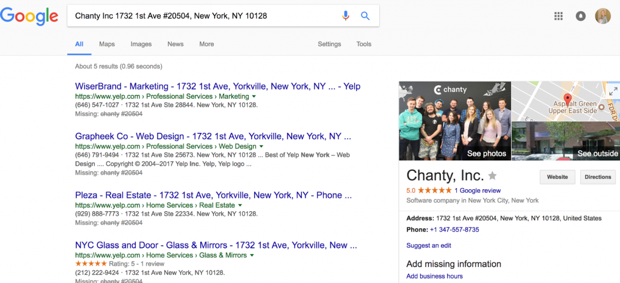 Chanty Google business listing
Chanty Google business listing
Don’t forget the social media
39. Register the accounts
While we don’t put much hope into social media as our primary traffic source, it’s still important to keep your customers updated. Twitter, LinkedIn and Facebook serve this purpose pretty well. Even if you don’t plan any social media activity yet, it’s still a good idea to reserve your brand name at all the major social platforms.
40. Make a template for your posts
This one isn’t a must, just something we’ve decided on doing to keep the proper branding of our product. When you build a website with great design, your social media images should be aligned with the main theme. Here are some of the templates we use in social media.

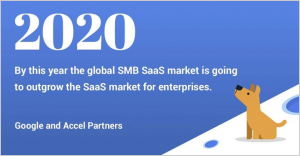 Chanty social media templates
Chanty social media templates
41. Set up scheduled posts
At some point there will be a need for automated posts. With not so many in LinkedIn and Facebook, we do post a bunch of tweets in Twitter which should be definitely scheduled. TweetDeck helps us pretty well with that.
Find beta testers
42. Involve your connections
Beta testers or early adopters are the people who will be the first to try your app. Private beta is usually performed within your circle of trust. Reach out to friends, former colleagues or even family members to become the earliest adopters of your app.
43. Beta testing platforms
We have tried numerous beta test platforms and the only advice I can give – save your time by submitting to Betalist. Other platforms bring very little results. If you don’t want to pay for an instant listing, make sure to submit in advance as it might take up to a few months for your startup to appear at their website.
44. Outreach directly
This works particularly well in LinkedIn as business owners are the target audience of B2B SaaS startups. I’ve written a detailed article on how we got a 100 beta testers without a product or landing page ready yet so you can follow the step-by-step instructions.
45. Make it viral
Motivate those who already signed up to share your startup with their friends. You can offer an early access to those who invite a number of friends (usually 3-5) by providing a unique url to share. You can also move them up in a waiting queue of beta testers or offer other rewards your audience would be interested in.
 Chanty after signup pop-up
Chanty after signup pop-up
Customer onboarding
46. Outline the customer onboarding minimum
No matter how simple the first version of your SaaS will be, you still need to onboard customers to your app. If you do it well, chances are the visitors will stay and convert into paying customers in the future. Just like every other task, designing the customer onboarding process starts with a plan. Focus on the vital things, e.g. at Chanty we’ve outlined the following steps:
- Sign up and sign in
- Welcome screen with the so-called “a-ha moment”
- The product tour
- Welcome and status emails
You can read more about customer onboarding in our blog article. It explains the overall flow we’ve taken to design the onboarding process step by step.
When you are ready to launch
47. Test it with your team
Get several people from your team to test your app for the first time before inviting early adopters. Make sure it’s not a developer or UX designer who know exactly where to go and what to click. Set a timer to find out how long does it take to go through the onboarding process and to actually start using a product. Record the user behaviour with services like HotJar to analyze it later. This test will help you improve your onboarding process and the UX before early adopters will receive their access.
48. Set up the beta test flow
Beta flow is basically a schedule for you and your team. When do you outreach those who signed up, inviting them to beta test; When do early adopters start testing out your app; How long should they test; What should they do afterwards to share a feedback (write it free-form, complete a survey, have an interview with a CEO, etc). It’s also good to understand how many beta testers you can handle. You don’t want your SaaS software to go down once too many people login at the same time.
49. Invite early adopters
Invite the people who left their emails. Be prepared that a part of your list will unsubscribe as soon as you reach out to them in an email. That’s OK, don’t expect everyone to be as excited about your product as you are. You’ll also find that some people out of this list are eager to test your app ASAP. These would make the perfect candidates for your private beta early adopters. Reach out, guide them through the flow, explain what are you expecting from them. Tell them if they are going to be interviewed or if they’ll have to answer the survey questions after the beta test. When you are done with that, it’s time to exhale and keep your fingers crossed.
50. Bonuses for your beta testers
The beta stage is the last step in a SaaS product pre-launch stage. By sharing their feedback, early adopters shape the future of your product and your business. Don’t forget to reward them for their time and effort. One year of your software free trial, lifetime account or Amazon certificate – think of what suits your audience best.
Way to go!
We hope the experience we’ve shared helps you during your SaaS product pre-launch. If you have any questions, feel free to reach us in the comments below or at info(at)chanty.com. We’ll be happy to help. Meanwhile, good luck pre-launching your product!



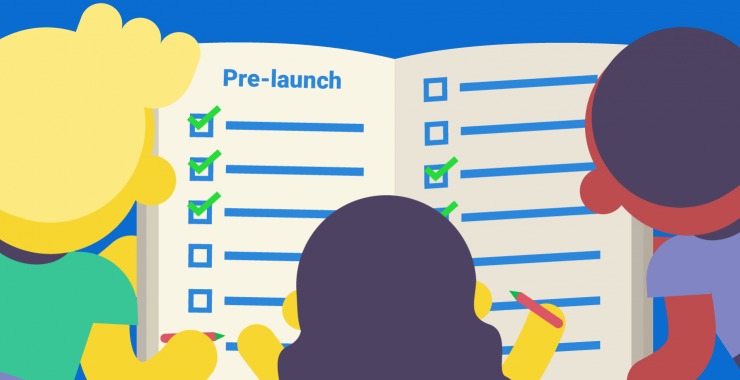


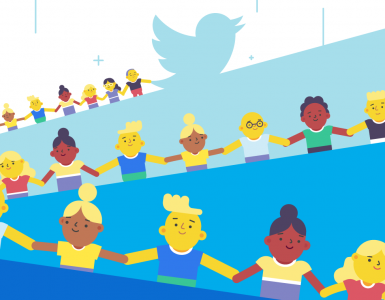


Add comment